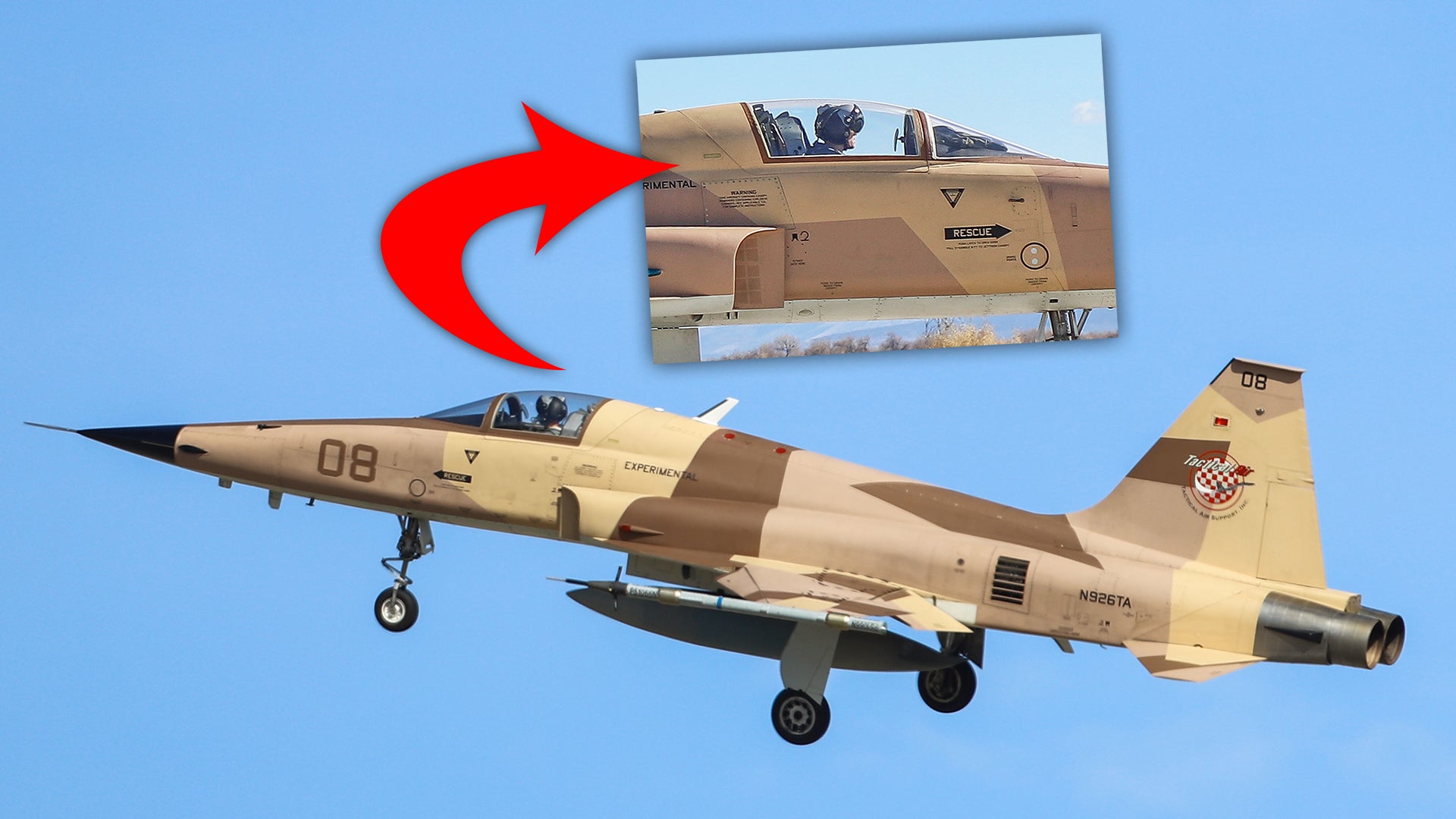Tactical Air Support Inc. (Tactical Air), the Reno-based adversary support contractor that won a big Navy contract to augment training operations at nearby Naval Air Station Fallon, the home of Topgun, is now fulfilling that contract with its heavily enhanced F-5ATs. The aircraft are being overhauled from the ground-up for the adversary mission and morphing into the most advanced F-5s ever devised. The War Zone has learned that these enhancements now include the addition of a full-color helmet-mounted display that gives Tactical Air aggressor pilots unique and highly valuable capabilities, especially when paired with the jet’s plethora of other upgrades. To our knowledge, this is a first for the rapidly expanding contractor adversary support industry.
The existence of the private aggressors utilizing helmet-mounted displays came to my attention when aviation photographer Christopher McGreevy posted some recent shots of flying operations at NAS Fallon. I noticed that the pilots were going about their high-octane trade with some unique headwear. I subsequently reached out to Tactical Air’s Mick Guthals, Senior Manager of Business Development with the firm, who provided a full rundown on this industry-leading capability and some of the other new bells and whistles on the company’s F-5ATs that he wasn’t able to disclose last time we talked, but could now.
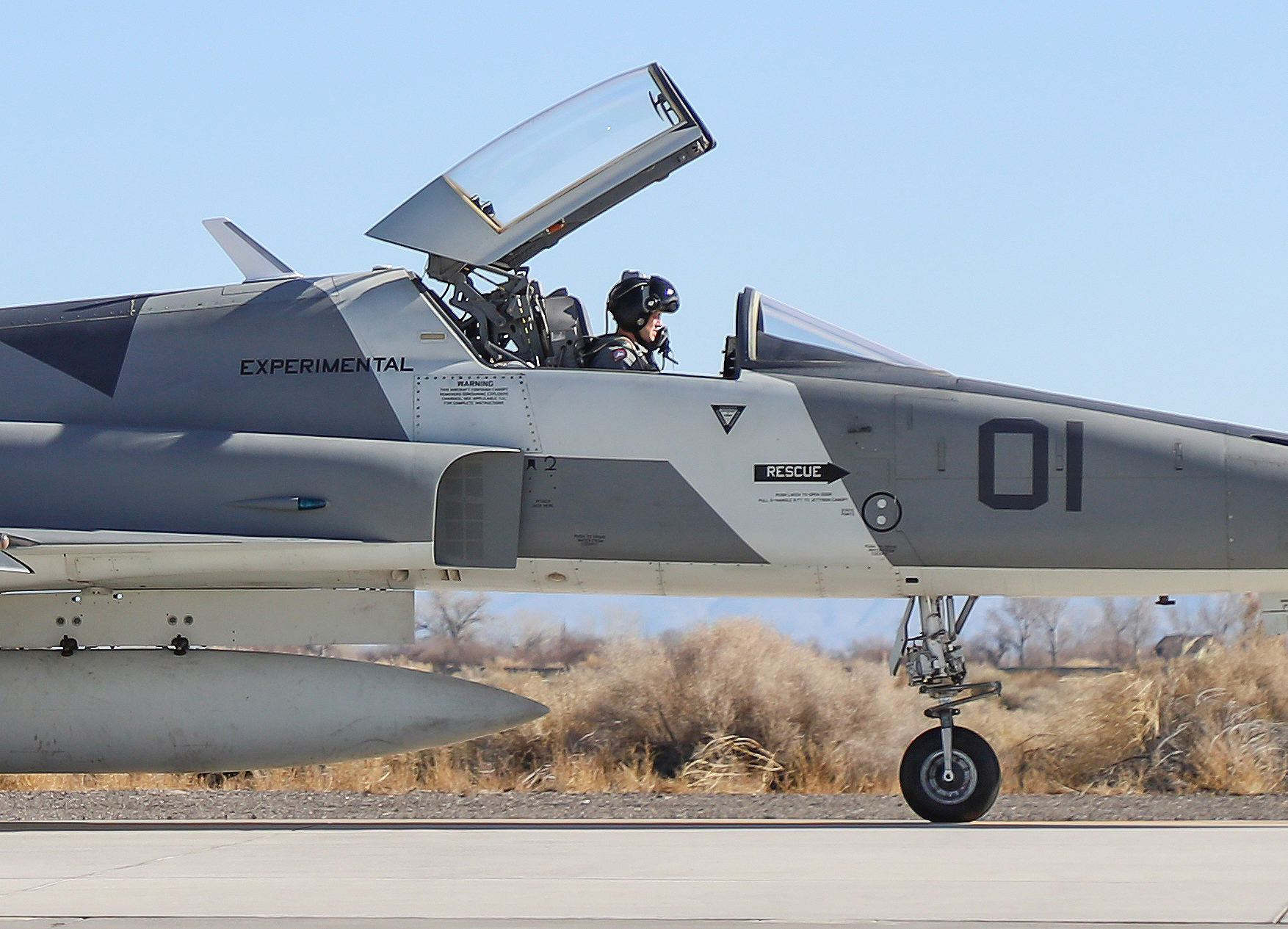
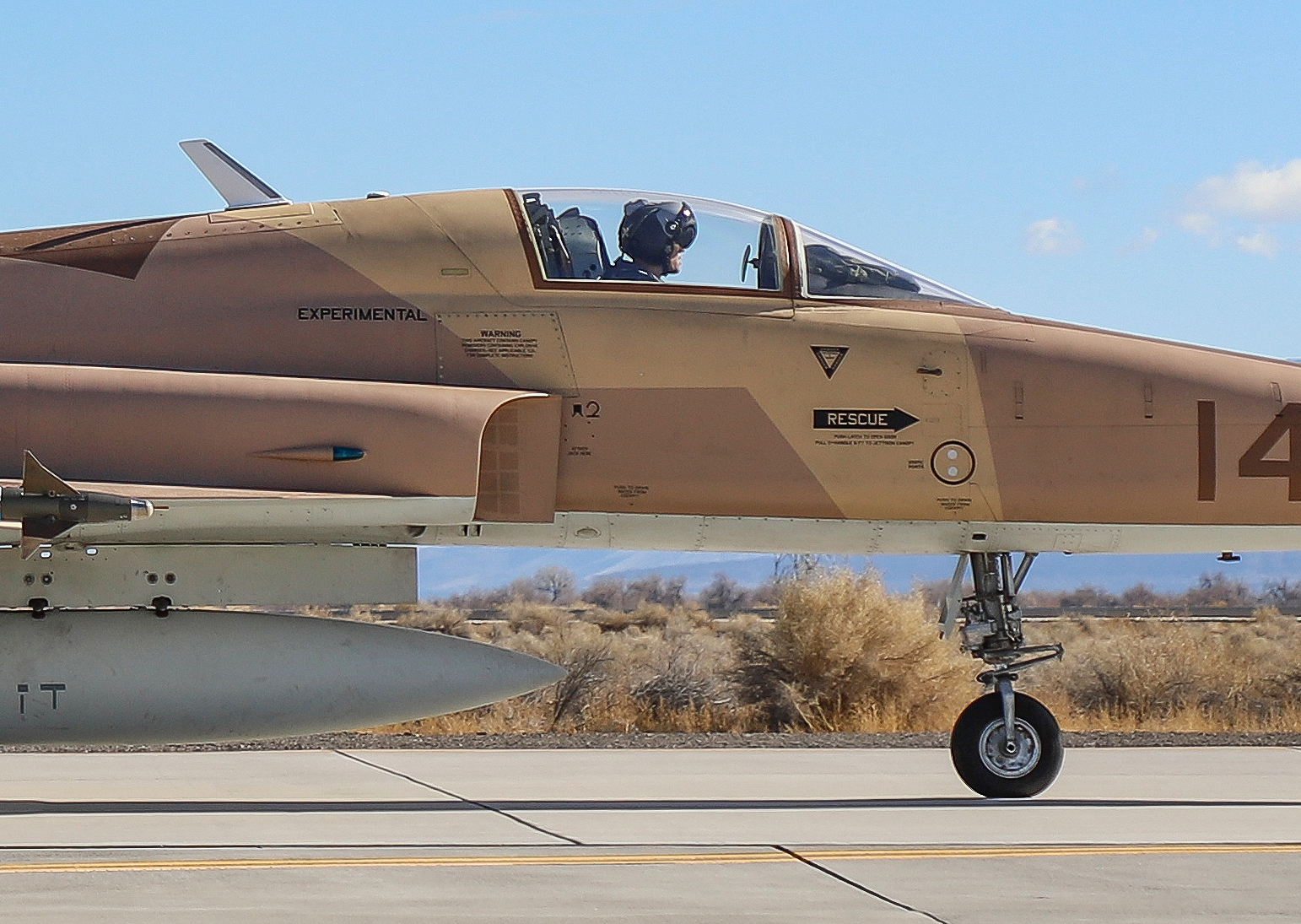
The F-5AT is equipped with the Scorpion HMD, one of the most capable and versatile in the world. Scorpion is used by a wide variety of aircraft, including A-10 Warthogs, F-16s, AC-130s, H-60s, and more. The F-22 was slated to receive Scorpion, as well, although that still hasn’t come to pass.
The system uses a monocle over the right eye instead of a visor projection concept that is used in other systems. This provides a series of advantages. It is easier to integrate and fit and it can be used day or night and even with night vision goggles. The system projects everything from basic flight data to weapons information, including a gun pipper for dogfighting, and sensor and data-link information in an augmented reality manner.
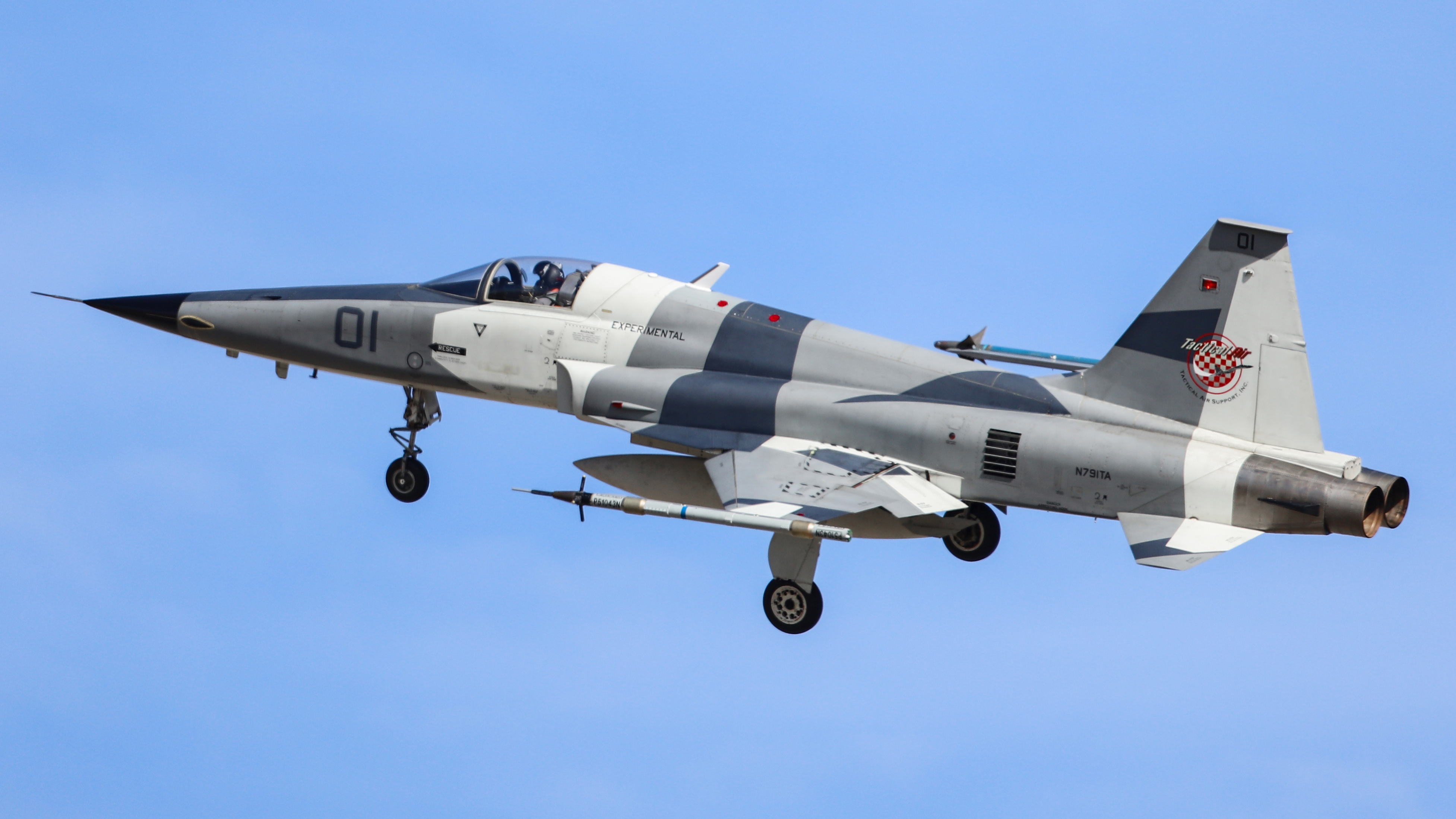
Guthals told The War Zone that the HMD was actually less expensive than integrating a heads-up display (HUD), which has far less functionality. In a sense, the F-5AT is configured similarly to the F-35, in a less advanced form, which also dropped the HUD entirely, with the HMD taking on all of its functionality and more. Scorpion can also simulate the employment helmet-mounted sight-aimed high-off-boresight air-to-air missiles that have proliferated around the globe. This is a huge plus for an aggressor aircraft as it can realistically present a critical threat to even the most maneuverable and stealthy fighters, should they wade into the short-range fighting arena. Although it is hard to spot and nimble in certain respects, the F-5’s performance is lacking when compared to 4th and 5th generation fighters. An HMD that can simulate these types of missile shots helps level that playing field.
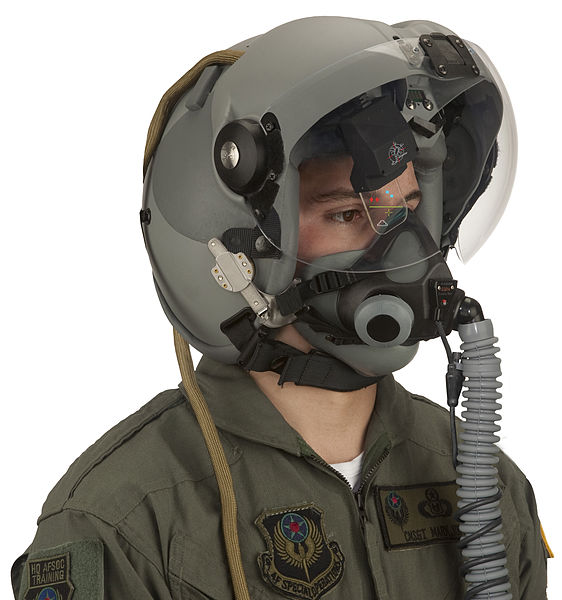
The F-5AT’s Scorpion HMD also records HD video right onto the jet’s open-architecture mission computer, a feature that is a huge leap in capability and is an invaluable tool to wield during the debriefing of the F-5AT’s fleet opponents. The video the helmet records is something akin to what the pilot is seeing through their own eyes, not just what is being viewed through a HUD at the front of the cockpit.
The Scorpion HMD is just one facet of what is turning out to be one potent and efficient aggressor jet. The six fully configured F-5ATs Tactical Air now has on strength also sport the multi-mode Nemesis pulse-doppler radar from Duotech. This system takes up the majority of the jet’s nose, with the guns having been removed. The radar is designed specifically for the adversary mission and is fully fused with the aircraft’s Garmin 3000 avionics suite.
Nemesis is superior in range to the AN/APG-66 radar that is found in a competitor’s A-4s and in older F-16s, some of which are going to be joining the private aggressor industry, and has the ability to simulate various enemy radars and missile systems. It is also designed for extreme reliability and has the potential to have its mechanically scanned array (MESA) antenna to be converted to a more capable active electronically scanned array (AESA) antenna in the future.
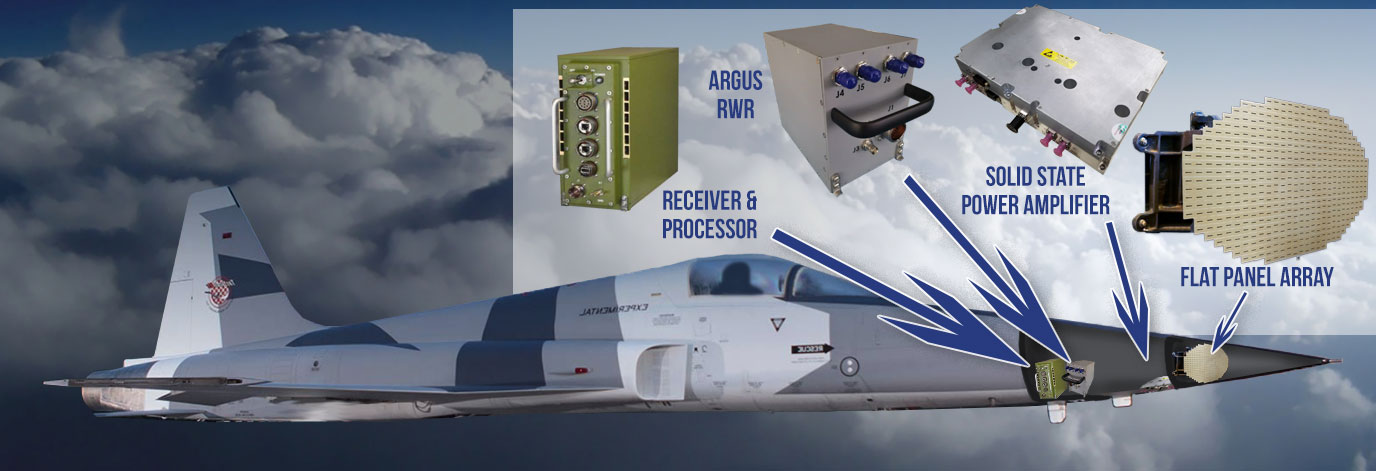
Duotech is also supplying the radar warning receiver suite for the F-5AT, which provides a high degree of passive situational awareness. The system, dubbed Argus, can be easily integrated onto certain aircraft, like the F-5, using existing apertures and has 360 degree, wideband threat detection capability.
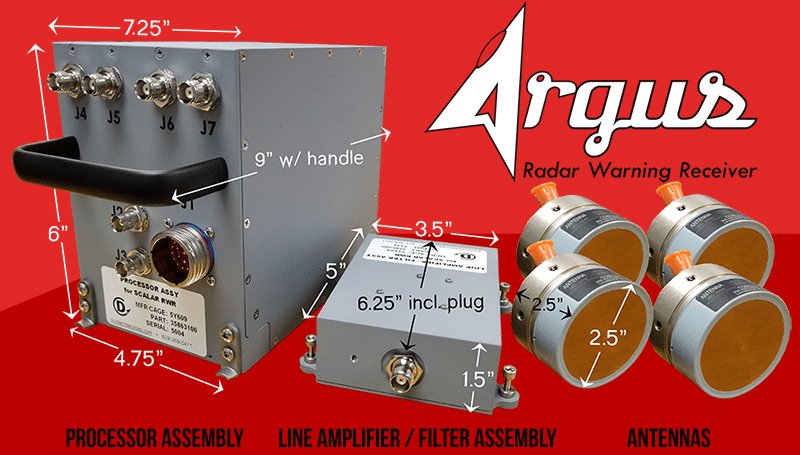
The jets are also set to receive a proprietary data-link that will allow them to share information freely among themselves, including targeting and weapons data, and it will support secure communications. This could be extremely useful if an AESA radar gets installed in some of the company’s F-5ATs. With the data-link, just one jet equipped with a more advanced radar could share all its information with other F-5ATs, making it a big force multiplier. Currently, the air combat maneuvering instrumentation (ACMI) pod the F-5ATs carry, the Cubic’s P5 model, offers limited aircraft-to-aircraft data-link capabilities, including the sharing of position data, which is highly useful for the aggressor role.
These features are in addition to the airframes being overhauled by Northrop Grumman and the Garmin 3000 large panel display glass cockpit being installed, as well as hands-on throttle and stick controls, and other enhancements.

The software that runs on the Garmin system and handles data-fusion and tactical information was also developed specifically for the aggressor mission. It’s called Venom and comes from L3Harris.
In a press release, L3Harris described Venom as such:
“Venom integrates the latest air-to-air capabilities using commercial off-the-shelf components, providing pilots’ desired look, feel and operation in the cockpit. The suite enables third-generation platforms to operate as a fifth-generation platform, and more realistically emulate modern adversaries.
The Venom suite continues L3Harris’ work in adversary mission systems by integrating a high-resolution tactical situation display, presenting radar and datalink track information, threats, system status and weapons engagement information with the Garmin® G3000™ Integrated Flight Deck touch controller and bezel key interfaces. This provides pilots an intuitive, cutting-edge capability for performing adversary training missions. Scaleable, reconfigurable and adaptable, Venom enables platforms to maintain relevance by easily and affordably incorporating new or desired adversary capabilities.”
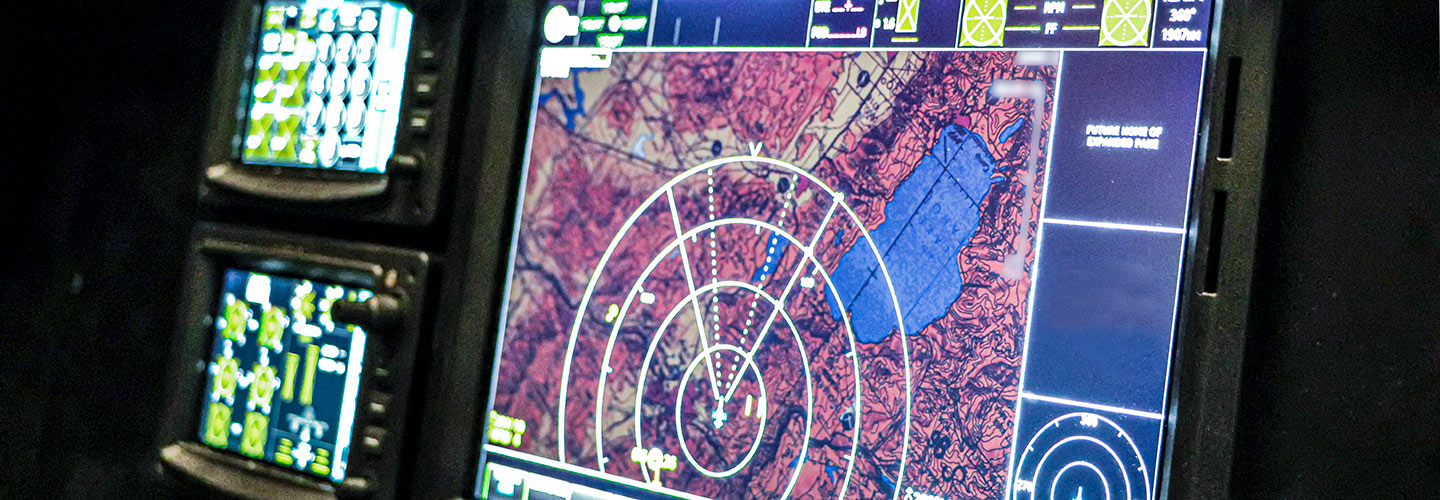
Guthals noted just how reliable the F-5AT configuration is. Four jets now operating out of Fallon accomplished three sorties each on a single day last week. That’s impressive reliability by today’s tactical fast jet standards.
Clearly, the Navy has taken notice as to what Tactical Air has accomplished with the F-5AT conversion and is looking at doing something very similar to its own comparatively antiquated F-5Ns, of which the service is buying more second-hand from Switzerland. Tactical Air is actually helping to manage that upgrade program for the Navy, so it is very likely that a similar, if not nearly identical configuration will eventually find its way into the Navy two F-5 equipped aggressor squadrons—VFC-13 and VFC-111—and the Marine’s single F-5 aggressor unit—VMFT-401.
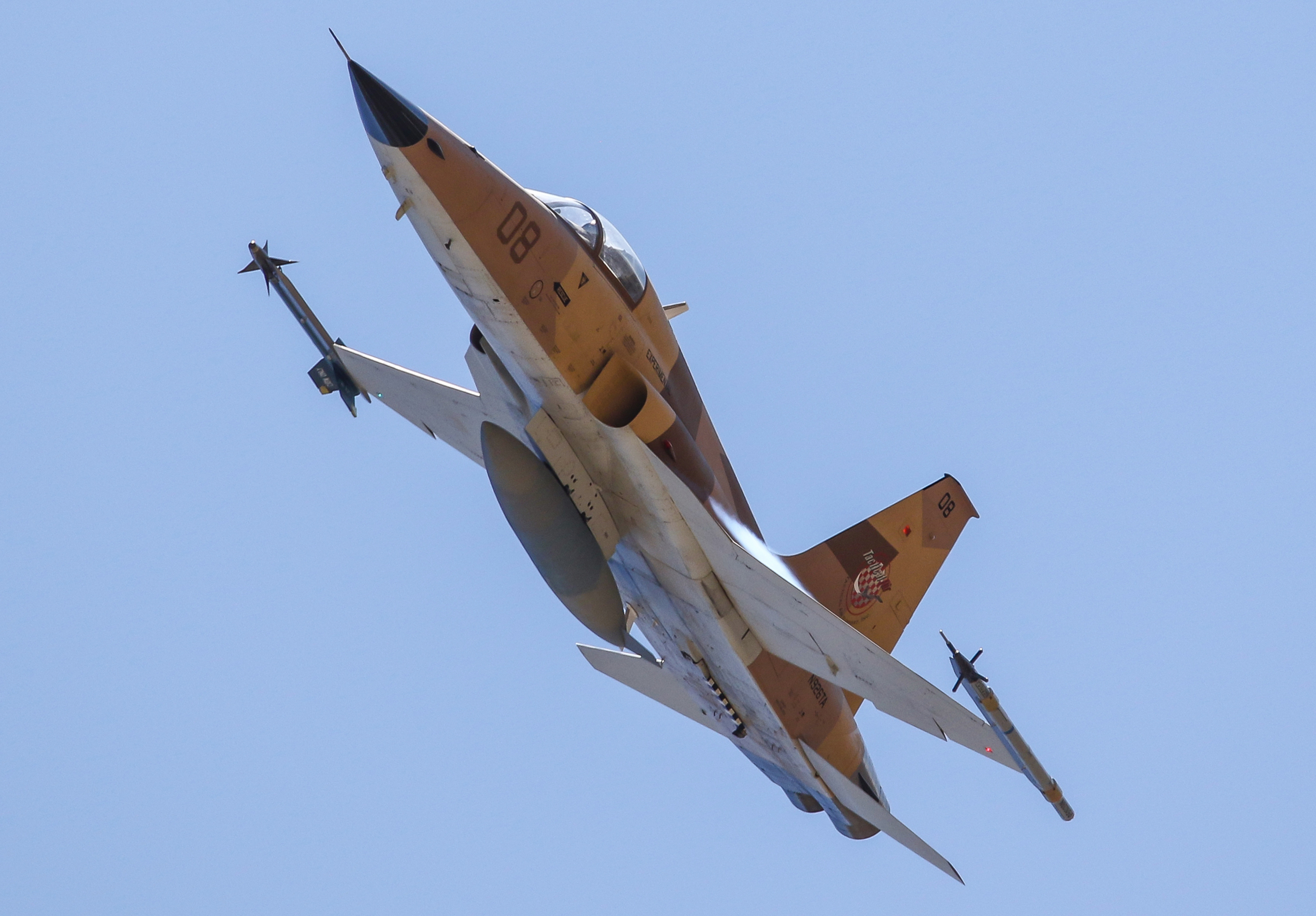
As for the longevity of Tactical Air’s ‘super Tiger IIs’ of sorts, they came from surplus Jordanian stocks and apparently had very low flight time to begin with, with around 2,000 hours on each of them. Guthals notes that the F-5s are good for roughly 7,000 hours as originally designed and can go significantly beyond that with a service life extension.
All told, it is fairly remarkably what Tactical Air has achieved with its F-5TA initiative. The little planes pack an incredible amount of current-day tech that is specifically designed for aggressor operations, not repurposed from combat applications, into highly reliable, proven, efficient, and enduring design. The Navy also gets to take advantage of its development work by upgrading its own F-5s, which remain the backbone of the Navy and Marine Corps’ aggressor force.
The Navy passed over another aggressor company that proposed using the F-16 platform for the NAS Fallon contract due to Tactical Air’s efficient plan. Time will tell just how good of a decision that was, but as it sits now, Navy pilots are facing an enhanced F-5 adversary that is better adapted to the aggressor mission than ever before and Air Force pilots are likely to be slugging it out with the F-5AT soon, as well.
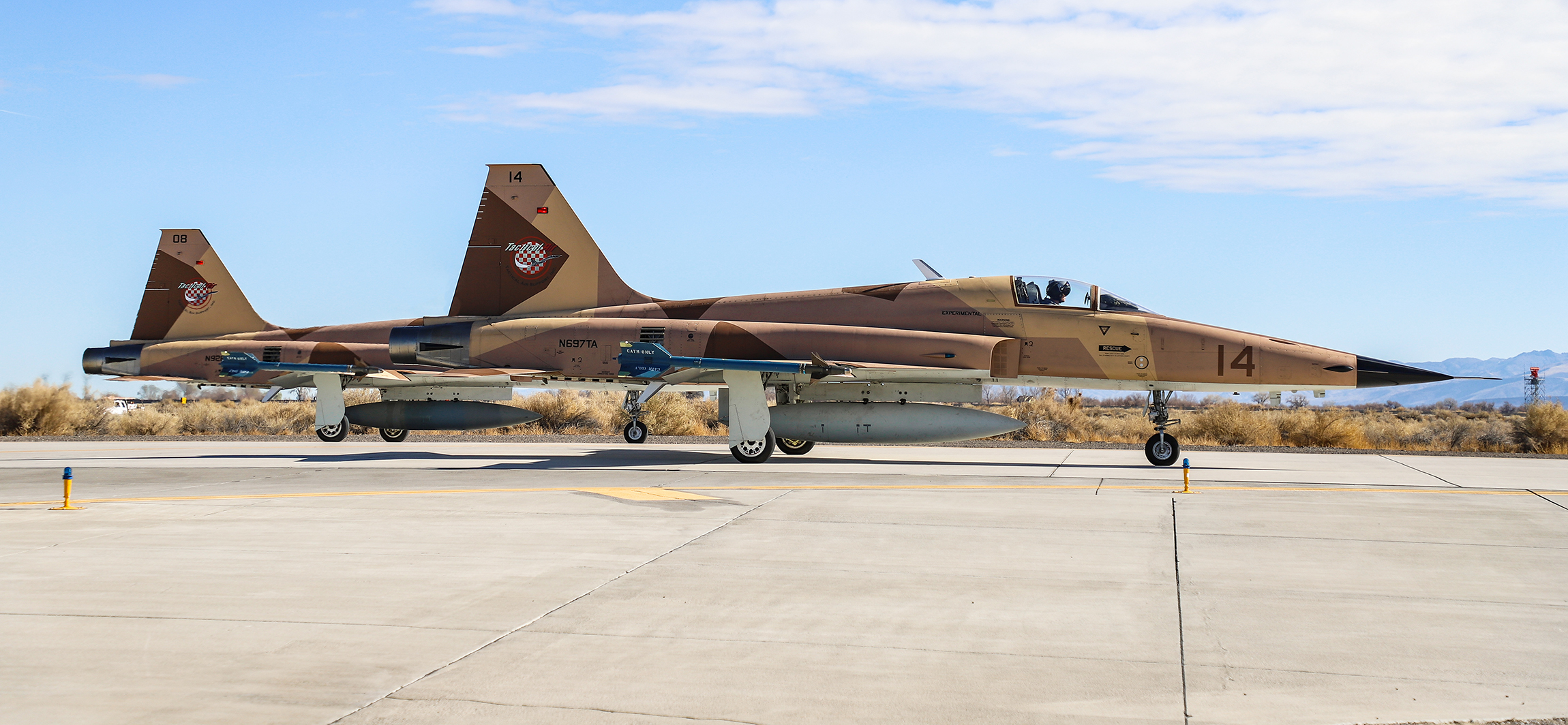
Contact the author: Tyler@thedrive.com
